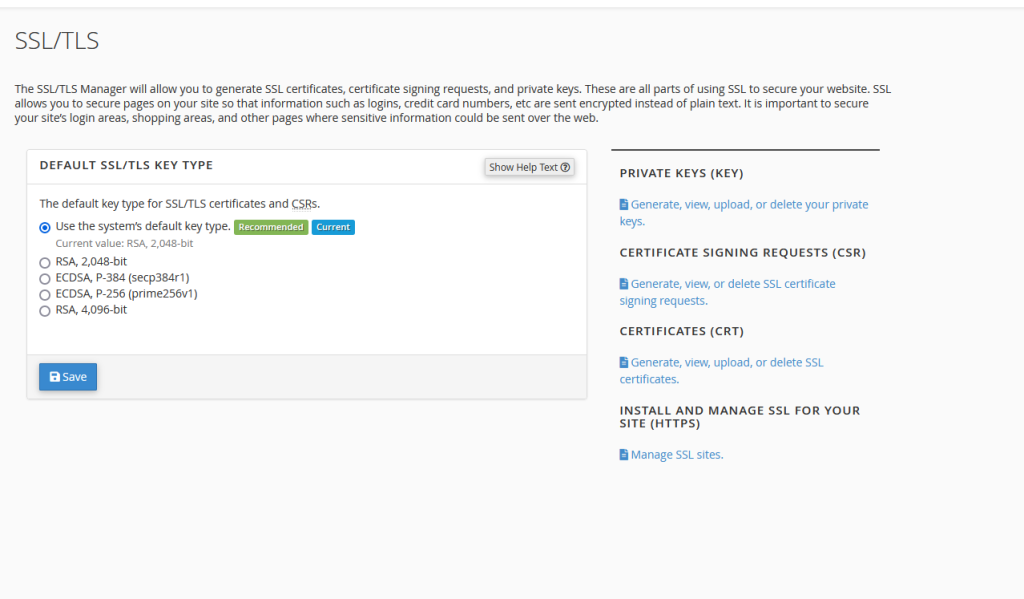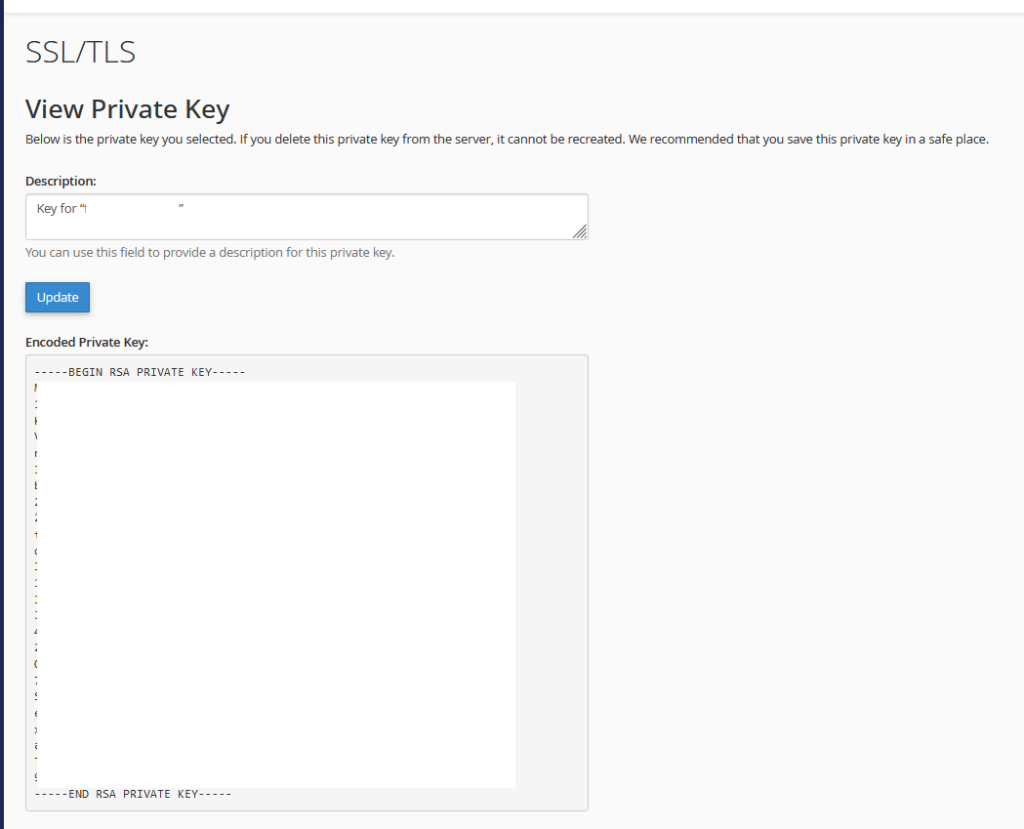What Is The RSA Key? How Does Its Size Affect SSL?
What is an RSA Key ?
The RSA key is a type of cryptographic key used in the RSA algorithm, which is a widely used public-key encryption method.
The private key is used for authentication and symmetric key exchange when establishing an SSL/TLS session.
RSA Key and its algorithm
The RSA algorithm works with two keys:
- Public Key: Used for encrypting messages or verifying signatures.
- Private Key: Used for decrypting messages or creating signatures.
The RSA key consists of a pair of values:
- Modulus (n): A product of two large prime numbers.
- Exponent (e or d): Used for encryption or decryption.
Together, these make up the RSA key pair used in secure communications.
This is part of the public key infrastructure commonly used in SSL certificates. Public key infrastructure presupposes asymmetric cryptography using two keys: a private key and a public key (contained in an SSL certificate).
Because asymmetric encryption takes too long to transmit encrypted data, this type of encryption is used for secure symmetric key exchange, which is actually used to encrypt and decrypt the transmitted data.
RSA Key Sizes and SSL/TLS
SSL (Secure Sockets Layer) and its successor TLS (Transport Layer Security) use RSA as one of the options for establishing secure communication. The size of the RSA key directly affects the security and performance of the SSL/TLS handshake.
RSA key size refers to the number of bits in the key (e.g., 1024-bit, 2048-bit, 4096-bit). Larger key sizes increase security, but also affect the performance.
How Key Size Affects SSL/TLS:
1.Security:
- Larger key sizes provide greater security.
- For example, a 2048-bit key is considered secure for modern use, while a 1024-bit key is considered weak by today’s standards.
- 4096-bit keys offer even more security but are rarely necessary in practice due to diminishing returns after 2048 bits.
2.Performance:
- Larger RSA keys increase the computational load during the handshake process. This means more time and resources are needed to establish a secure connection.
- A 2048-bit RSA key is commonly used today as a balance between security and performance. Going higher, like 4096-bit, increases handshake time and CPU usage.
- For mobile devices or servers handling a large number of connections, using a larger RSA key size can significantly slow things down.
3.Compatibility:
- Most modern browsers and servers handle 2048-bit keys by default, while older systems may only support 1024-bit keys.
- Using extremely large key sizes (e.g., 4096-bit) may cause compatibility issues with older software.
In webhosting control panel like cpanel there is option called SSL/TLS under security, You can check select the RSA keys for SSL certificate.

An RSA private key is usually generated along with a CSR. Neither we nor the certification authority has access to your private key. It is generated locally on our server and is never sent to us. It looks like a code block with headers:
—–BEGIN RSA PRIVATE KEY—–
—–END RSA PRIVATE KEY—–

You can specify the key size when generating a CSR/private key. Most certificate authorities consider 2048 bits to be the optimal size for RSA private keys. This is because it provides a reasonable level of security and does not place a heavy load on the server’s CPU.
If you prefer, you can use a 4096-bit key size for your certificate’s private key, but each cloning of your RSA private key slows down the SSL/TLS handshake by a factor of approximately 6-7.
If we choose the 4096-bit key size of the RSA key for SSL, the following are its impacts of it:
– Encryption strength has been improved.
– SSL handshake at the start of each connection slows down.
– CPU usage increases during the handshake.
Conslustion:
- RSA Key: A pair of cryptographic keys (public and private) used for encryption/decryption in SSL/TLS.
- Larger Key Sizes: Offer stronger security but at the cost of slower performance.
- 2048-bit keys: Provide a good balance between security and efficiency and are the current industry standard.




